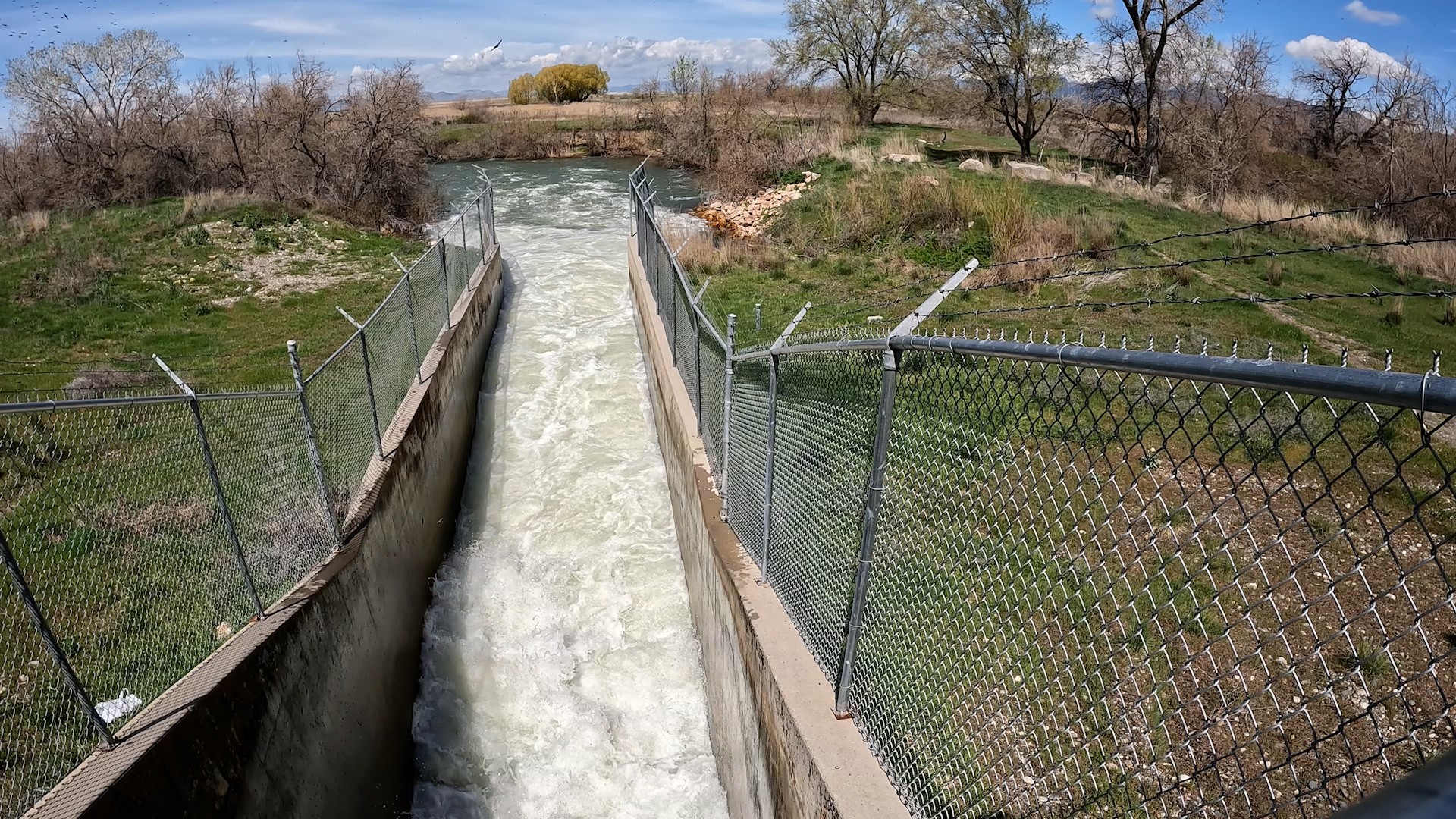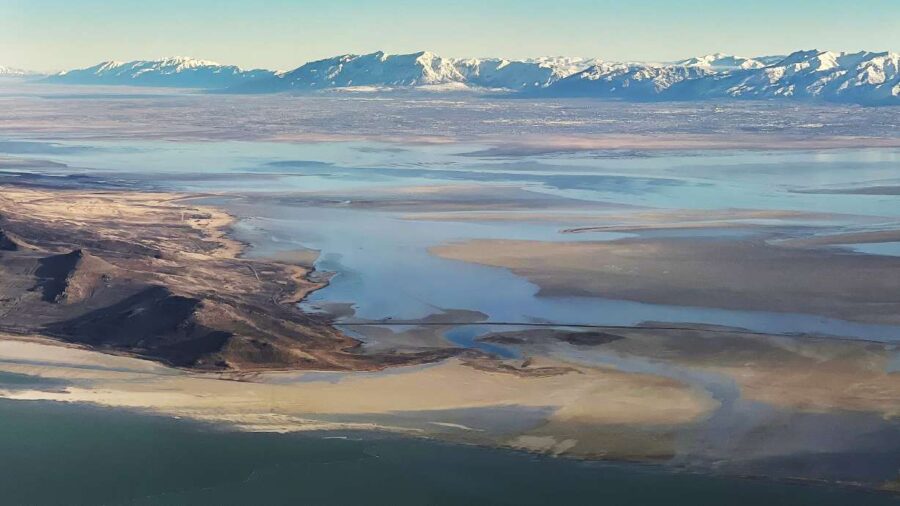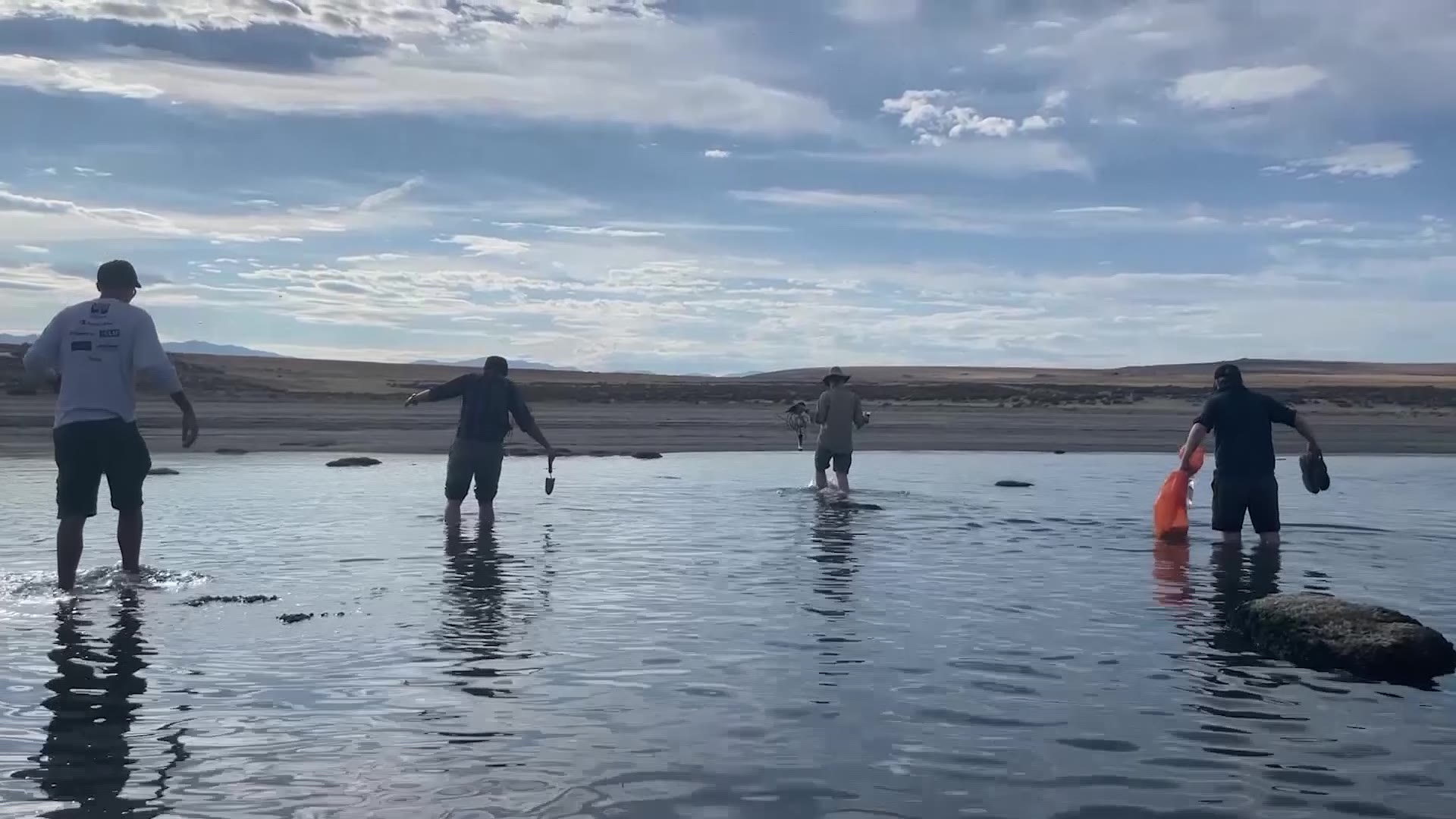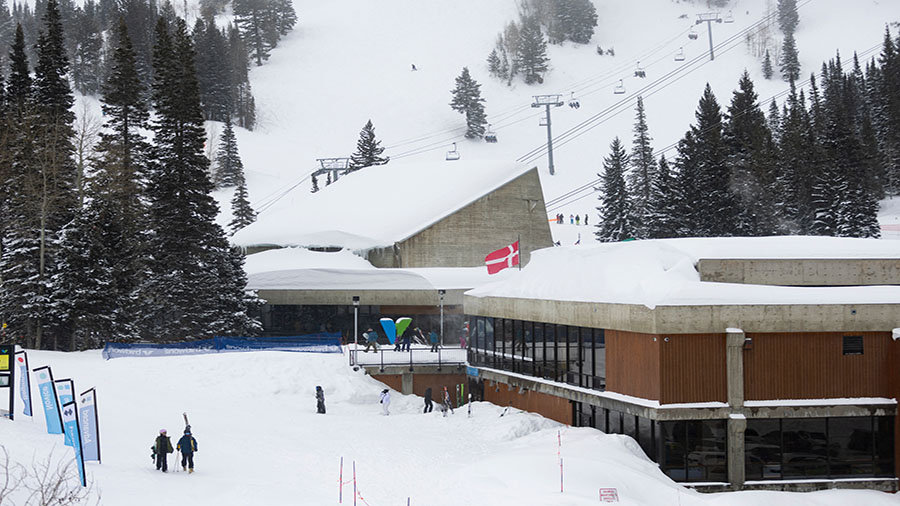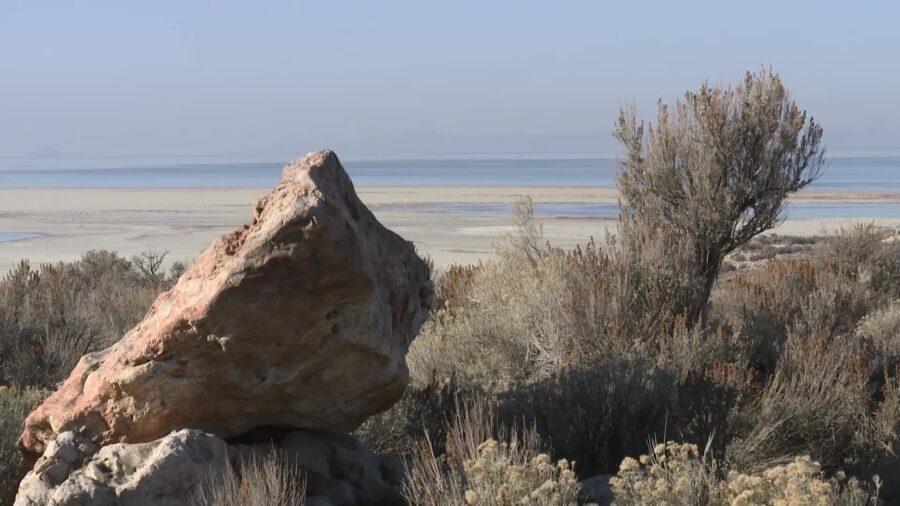Don’t blame farms for drying up the Great Salt Lake. Why they could be key to its survival.
May 23, 2022, 5:12 PM | Updated: May 24, 2022, 8:48 pm
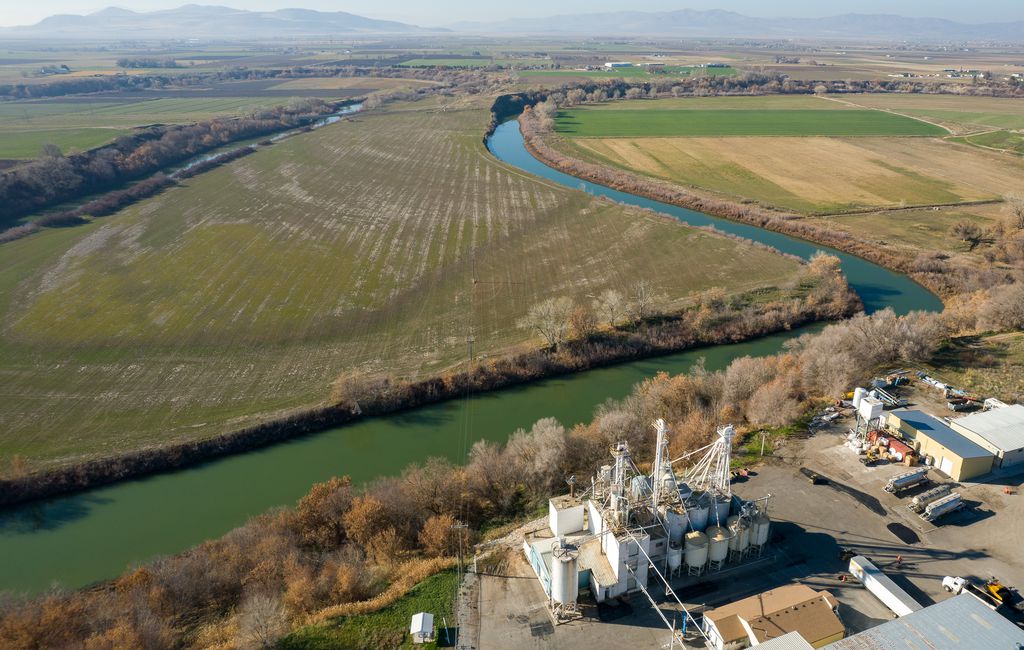
(Trent Nelson | The Salt Lake Tribune) Agricultural operations are seen along the Bear River, the Great Salt Lake's largest tributary, in December 2021.
(Trent Nelson | The Salt Lake Tribune)
When it comes to finding solutions for the desiccated Great Salt Lake, water rights attorney Nathan Bracken says he often hears Utahns blame agriculture.
Farming is, indeed, the largest water consumer in the Great Salt Lake’s watershed and across the state. About three-quarters of Utah’s water funnels to irrigation, while agriculture accounts for less than 3% of the state’s gross domestic product. And a lot of that water is used to grow alfalfa.
“There’s this mentality that ag’s the problem,” Bracken said at a forum hosted this week by FRIENDS of Great Salt Lake at the University of Utah. “‘You know, we need to dry up the farms. They’re the ones that are using all the water, and they’re wasteful and inefficient.’”
In reality, Utah’s agricultural land is getting gobbled up by urban growth. Nearly 1.2 million acres of farmland have been lost since 1997, according to the latest Census of Agriculture.
“We’ve done a bang-up job of drying up our farms in the Great Salt Lake watershed,” Bracken said, “and the lake’s never been worse.”
With the West’s tenacious drought and booming growth on the Wasatch Front, all signs point to the Great Salt Lake sinking to record low this summer, beating a previous record 4,190.2-foot elevation set last October.
But lake advocates point to a slew of water-related legislation passed over the winter as a source of hope, and farmers could be a big part of the solution.
‘Sea change’ movements in water law
Until this year, the Great Salt Lake’s biggest obstacle to getting more water was a concept 19th-century pioneers brought with them when they started putting down roots in the area.
Those settlers viewed any drop left in a stream that found its way to the terminal Great Salt Lake as essentially wasted, since it wasn’t put to a “beneficial use.”
“When you have a water right, you don’t physically own that water molecule,” said Emily Lewis, another water rights attorney. “What you have is the right of use of the public’s water.”
Irrigators who didn’t use their full allotment of water had to forfeit those rights to someone else who could make use of it.
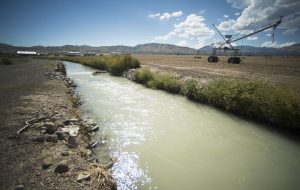
Rick Egan | The Salt Lake Tribune A water district canal runs through a Latter-day Saint welfare farm in Bluffdale in 2014.
“[It] was intended to make the desert bloom,” Lewis said, “to make the cities grow, to build the cabins, to grow food for the populace.”
As Utah’s population swelled, however, society also grew a better understanding and appreciation of the environment — and what the state stands to lose if the Great Salt Lake turns to dust.
But the pioneer-era “use it or lose it” way of thinking gave farmers no incentive to conserve. They also had no mechanism to dedicate some of their water to protecting wildlife and natural ecosystems.
Now, with the passage of bills like HB33, irrigators can lease some or all of their water to benefit the environment, including the Great Salt Lake, for a period up to 10 years without the risk of losing it.
Another bill, HB410, created a $40 million trust state agencies potentially can tap to buy or lease water rights for the lake.
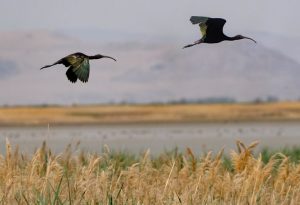
(Francisco Kjolseth | The Salt Lake Tribune) Glossy ibis fly over the Bear River Migratory Bird Refuge, a 74,000-acre nature reserve in the northern Great Salt Lake in June 2021.
“I’ve heard some people say that these are baby steps,” Bracken said. “They’re not baby steps. These are huge, fundamental, sea change movements in the area of water law.”
The attorney added that the state should continue to seek permanent water rights for the Great Salt Lake, but with the growing demand for and price of water, a single water right could drain the $40 million trust.
Buying all the water rights needed to save the Great Salt Lake will take a “very, very long time,” Bracken said, and the lake needs help now.
“Leases,” he added, “are cheaper and faster.”
Agriculture is one of the few industries that offers the flexibility of leasing. Once farmland is turned into subdivisions or factories, much of that flexibility is gone.
Giving alfalfa a break
While agriculture gets a bad rap for using lots of water to grow alfalfa for hay, some lake advocates and researchers say the crop doesn’t deserve its bad rap.
“There’s a reason we grow alfalfa in Utah,” said Matt Yost, an assistant professor at Utah State University who studies ways to improve irrigation and help farmers adapt to climate change. “It does really well here.”
Alfalfa is perennial, which means it grows back year after year and doesn’t need planting each season like corn or other annuals. It’s good for soil, Yost said, because it provides year-round ground cover. It’s resilient to weather extremes, which provides some security for crop producers.
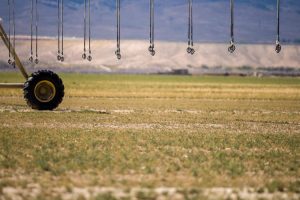
(Trent Nelson | The Salt Lake Tribune) Sprinklers hang from a pivot over an alfalfa field left dry due to drought conditions at a farm in Centerfield in October 2021.
“If they put in a vegetable crop that they spend exorbitant amounts of money to establish and then it fails, or they run out of water,” Yost said, “it’s a huge, huge loss. Whereas, alfalfa reduces that risk.”
While some Utahns complain that farmers ship their alfalfa overseas, essentially exporting the state’s water, Yost said only about 15% of the hay is sold out of state.
“It’s not the majority by any means,” Yost said.
Crucially, when farmers stop irrigating alfalfa, it goes dormant.
That means a farmer can grow a prime cutting or two in spring, when it’s generally wet, then lease water that would have been used to irrigate subpar cuttings when it’s hot. That way the Great Salt Lake and its tributaries get water when they need it most, and the farmer still gets paid.
“It’s easy to look at alfalfa … as a boogeyman,” said Rep. Timothy Hawkes, R-Centerville, who has sponsored and advocated for several bills benefiting the Great Salt Lake. “But one of the really nice things about alfalfa is that the water applied to it is adjustable.”
Farms also provide a slew of other benefits for the Great Salt Lake’s watershed. They’re a source of local food. They provide open space and habitat for wildlife like migratory birds. Irrigation can help recharge aquifers and tributaries. Agricultural revenue also helps support rural communities throughout the state.
“For a lot of us, historically, the question has been: ‘Are we going to have agriculture, or are we going to have the Great Salt Lake?’” said Rep. Joel Ferry, R-Brigham City, who farms along the Bear River, the lake’s largest tributary. “I take the approach of, we can have both.”
This article is published through the Great Salt Lake Collaborative, a solutions journalism initiative that partners news, education and media organizations to help inform people about the plight of the Great Salt Lake — and what can be done to make a difference before it is too late. Read all of our stories at greatsaltlakenews.org.


